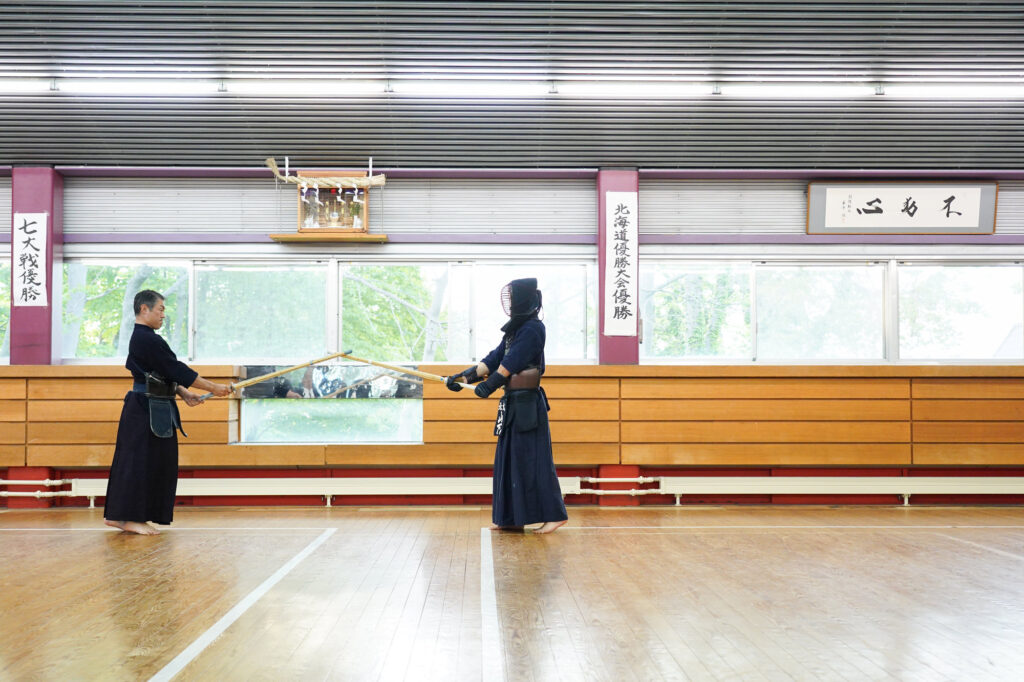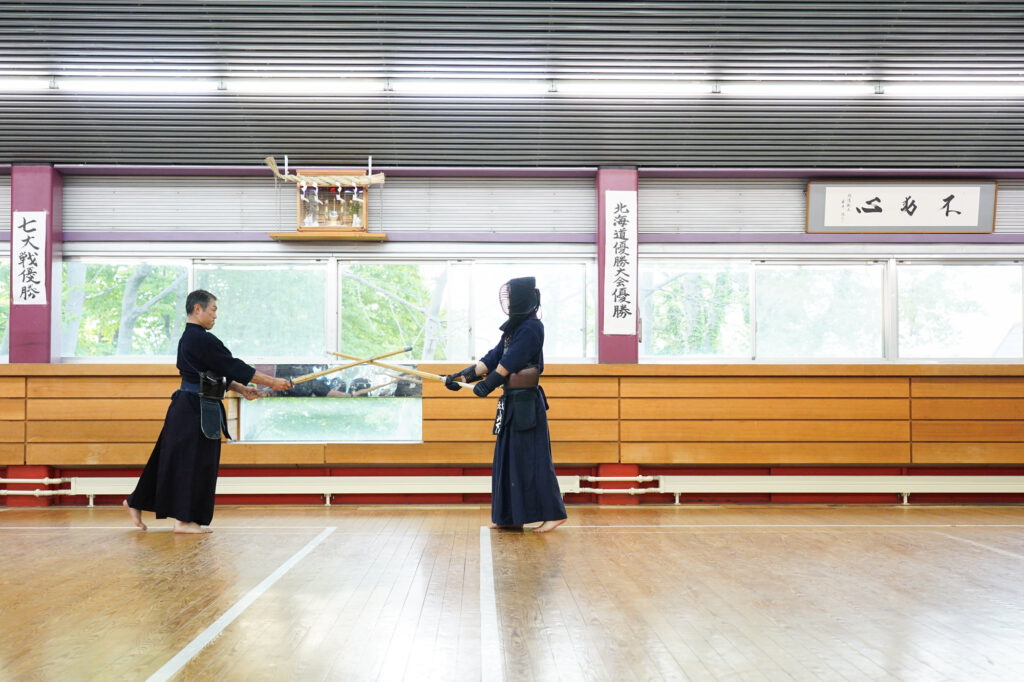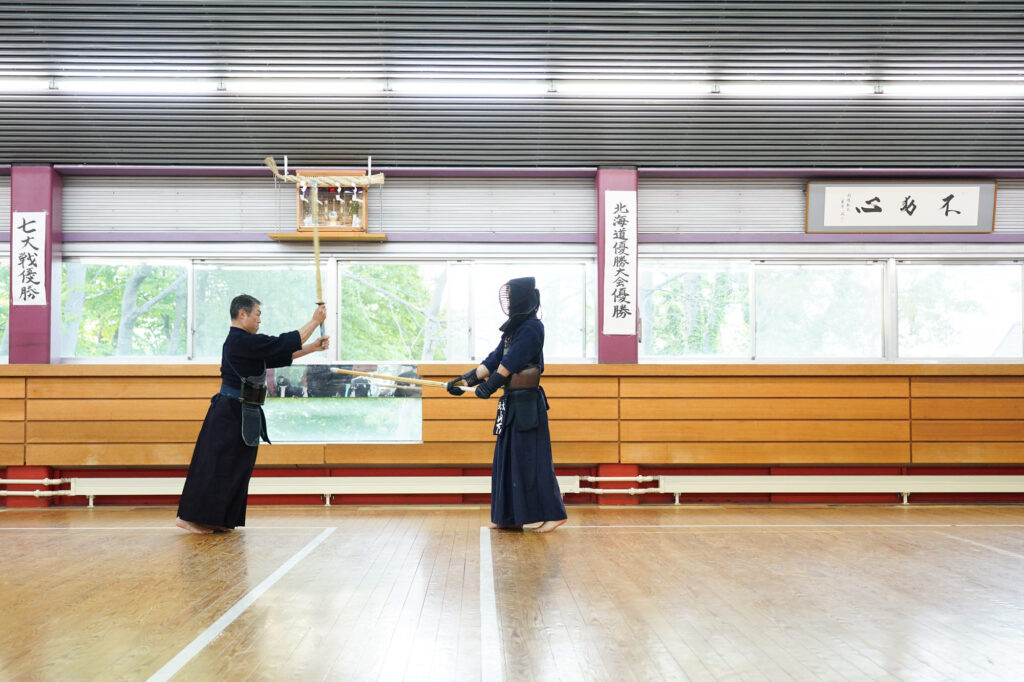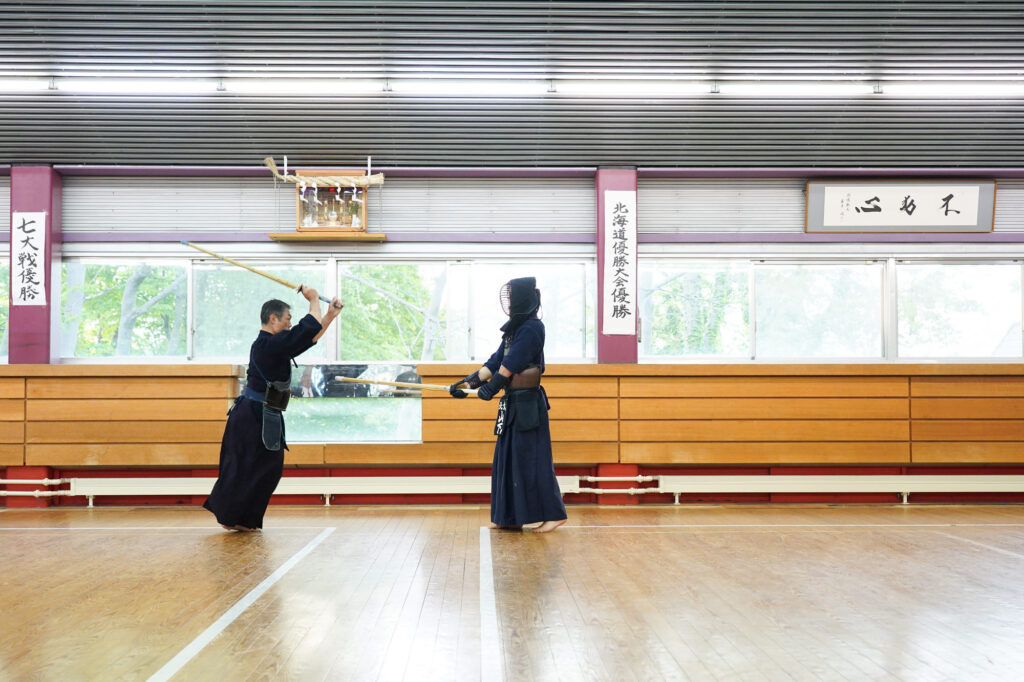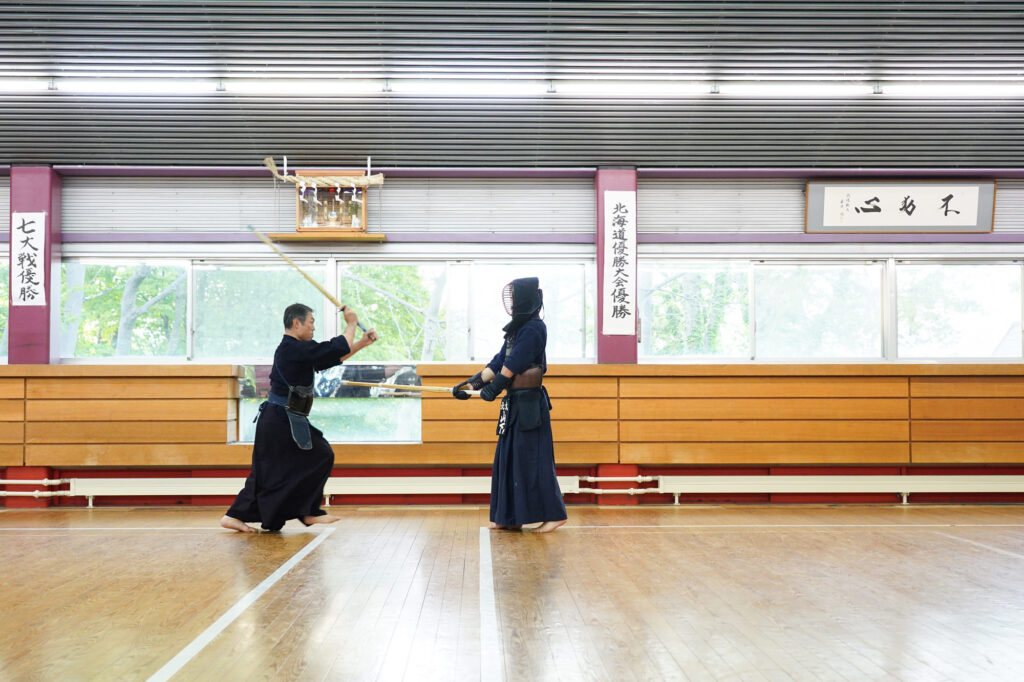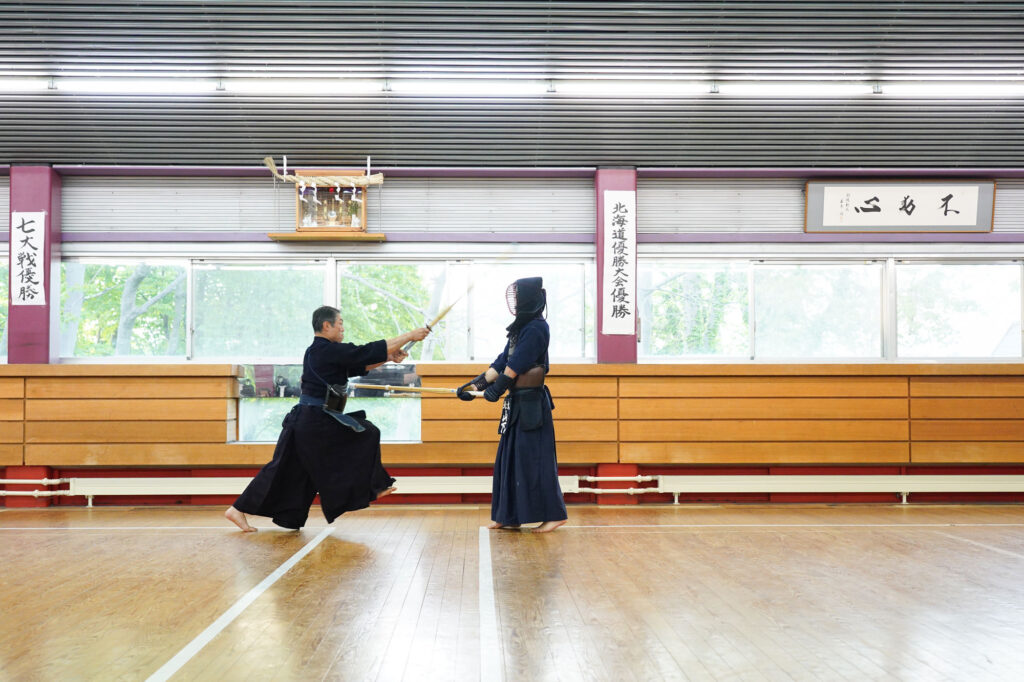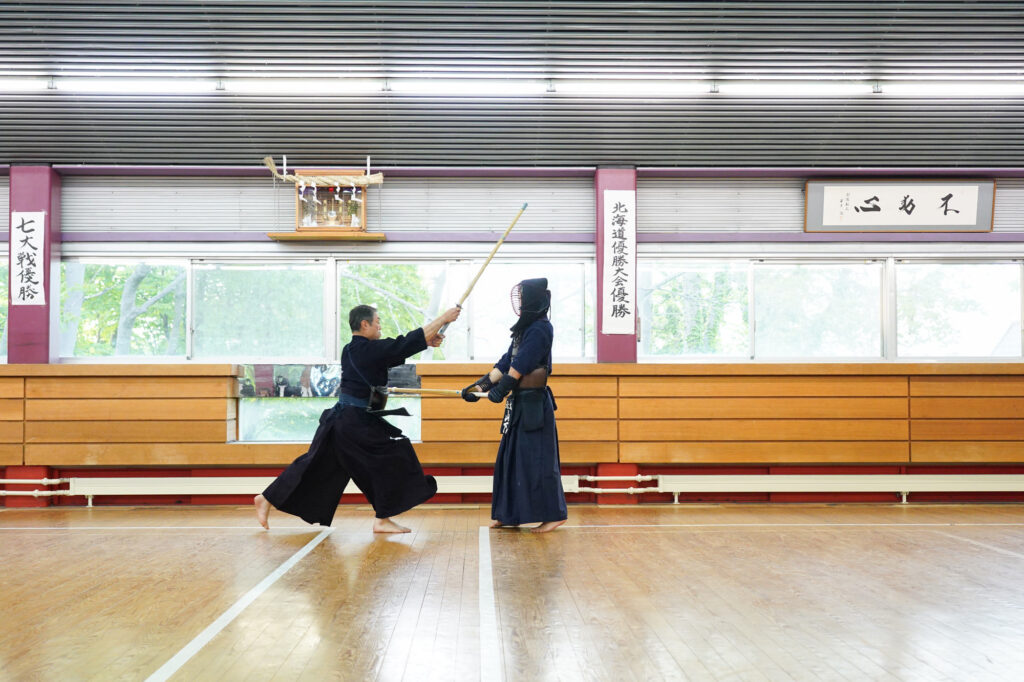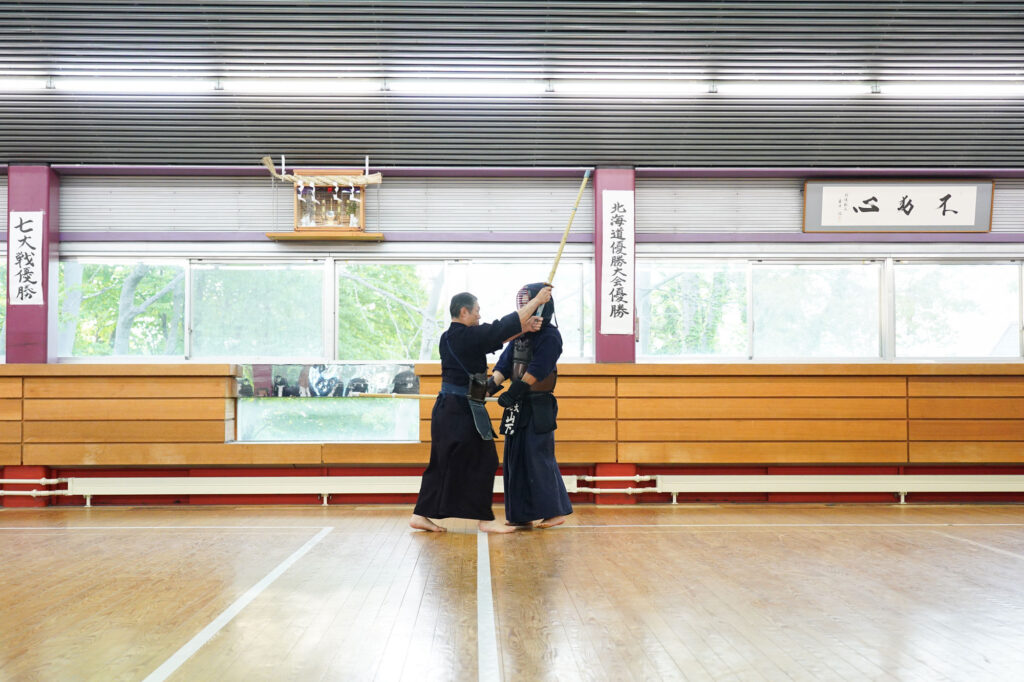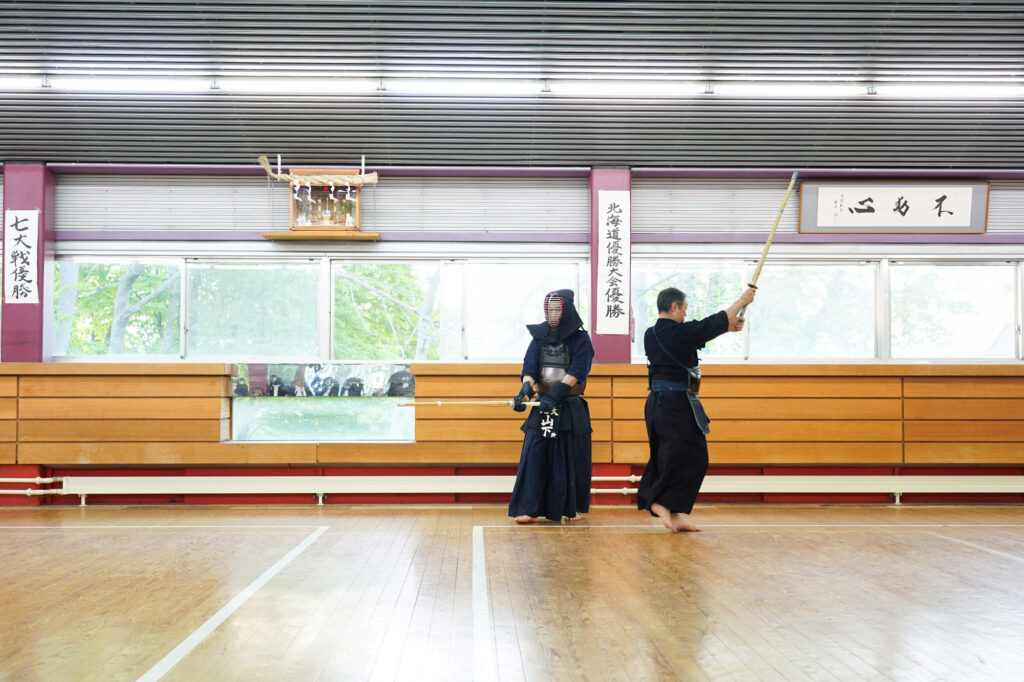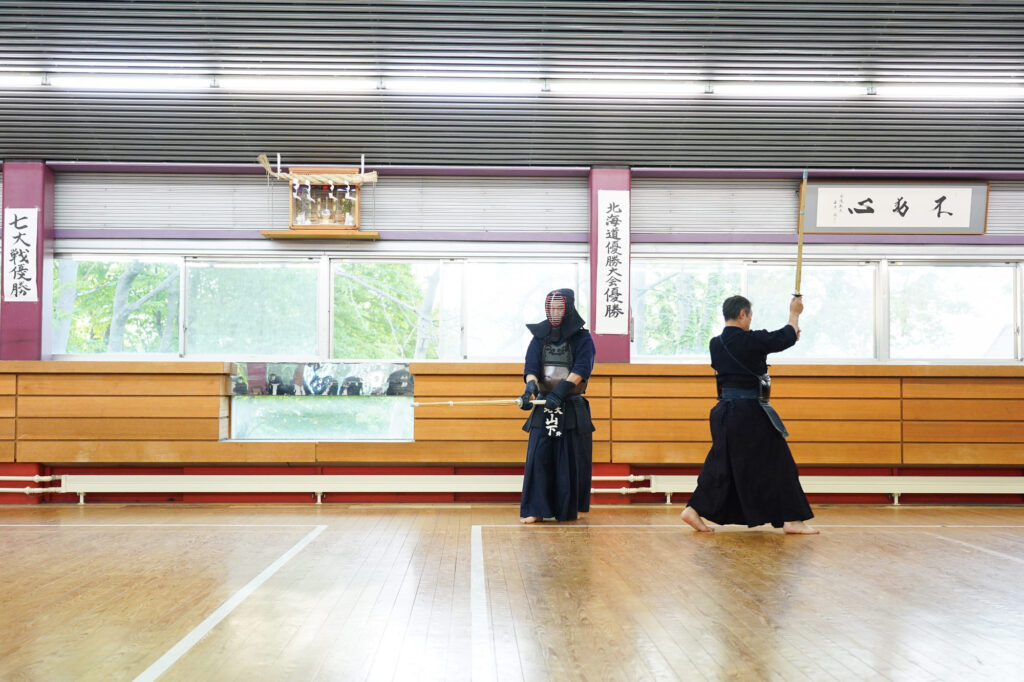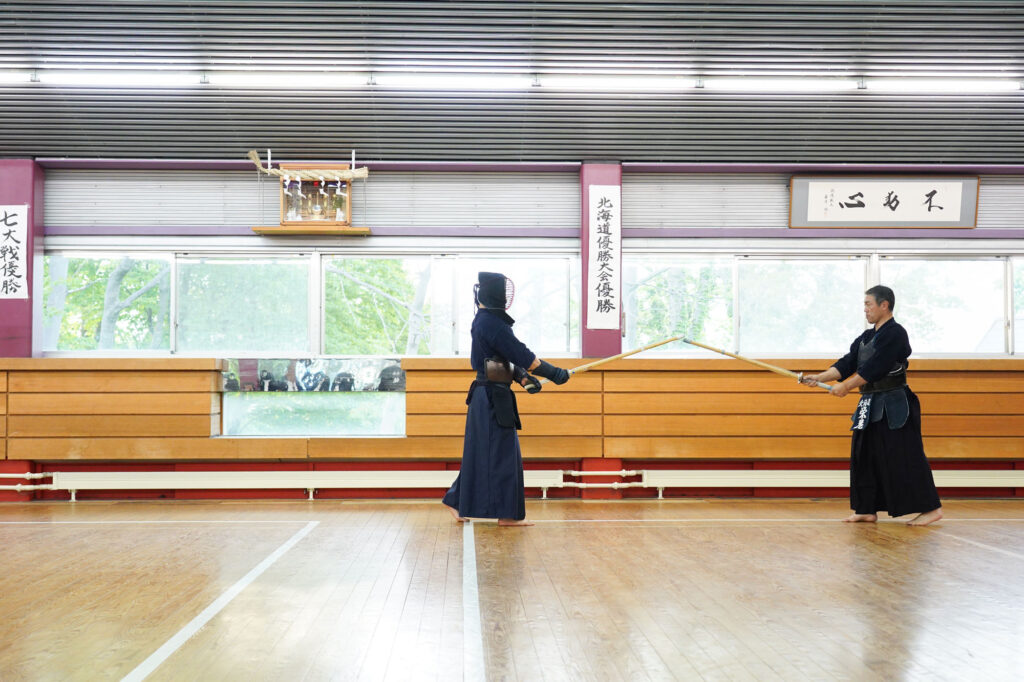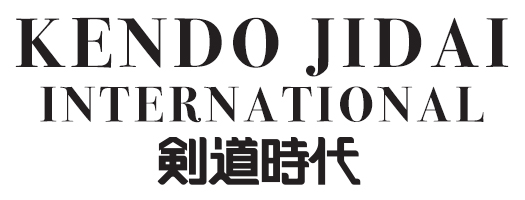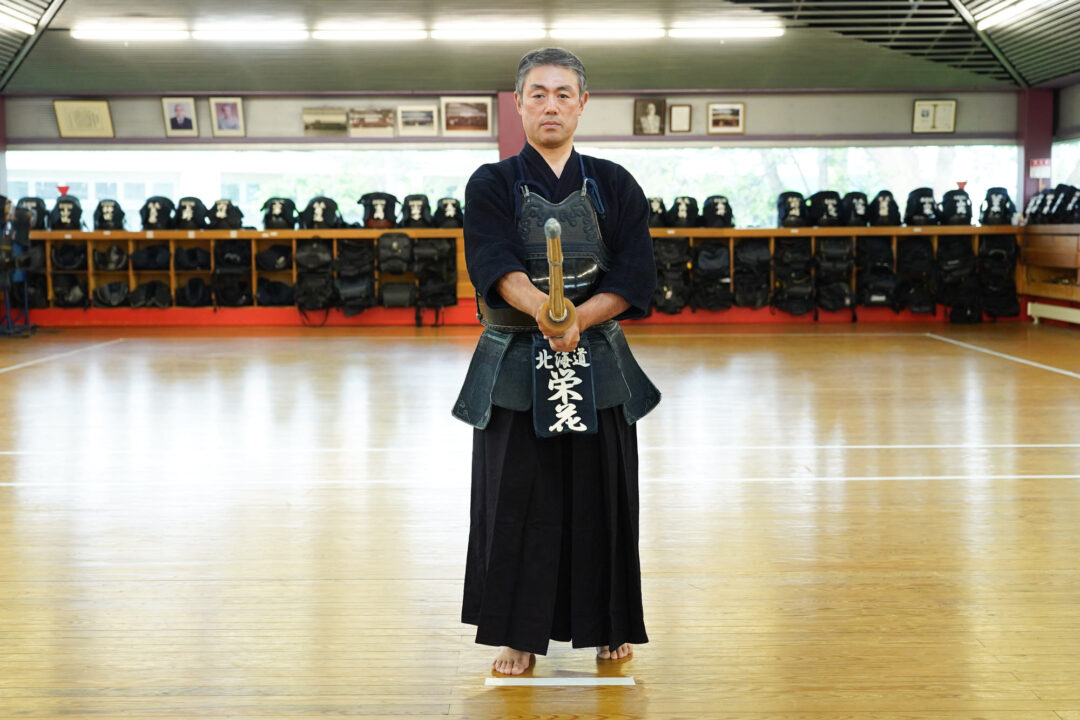2024.8 KENDOJIDAI
Photography = Sasai Takamasa
Translation = Sato Mariko, Pepijn Boomgaard
Eiga Naoki Sensei emphasizes that ‘it is essential to always connect your Kamae and the movement of your Kensen to the strike.’ We asked about his techniques.
Eiga Naoki, Kyoshi 8th Dan
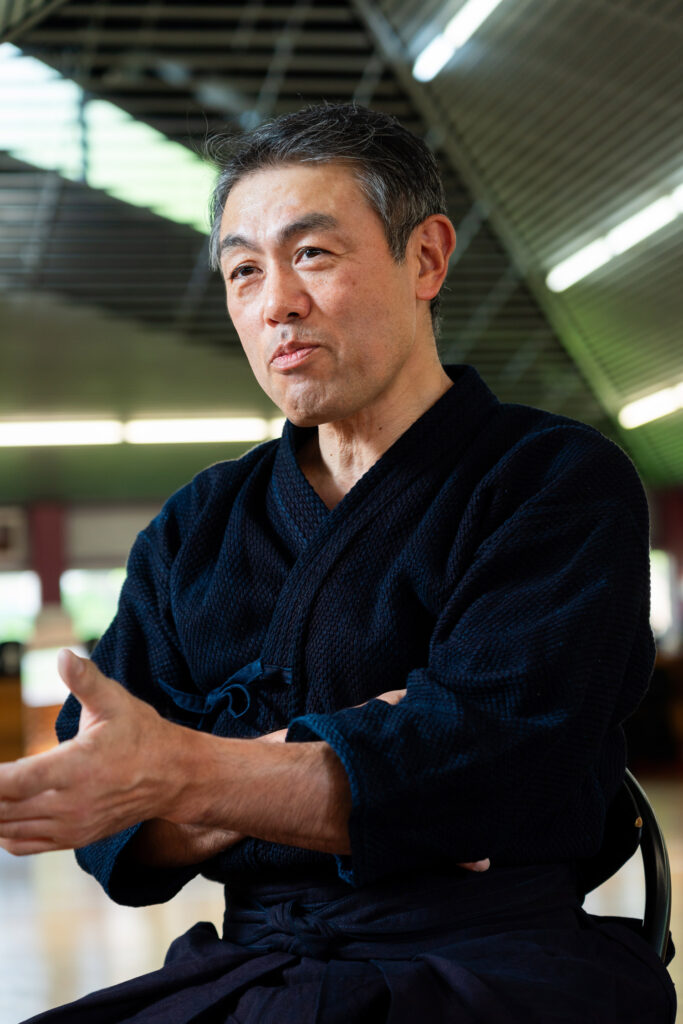
Kendo is about scoring valid strikes through the use of a Shinai. If you execute a technique with an evenly matched spirit, the Kensen will clash. This is where the need arises to control the center by parrying or suppressing with your Shinai. However, to win through Seme, I believe it is essential to perceive your opponent not as a flat surface, but as a sphere.
Perceiving your opponent as a ‘sphere’ is purely an image to help you maintain a soft yet controlled center while closely observing their situation, ensuring that your offense and defense are unified. When adjusting the Maai, it’s important not to retreat, but to move while being able to respond to your opponent, with the goal of constantly maintaining an advantageous position.
In Kendo, the striking areas are Men, Kote, Do and Tsuki. To target the Men, you need to lower or open your opponent’s Kensen (sword tip). This requires putting pressure on their hands, and the moment you do, if your opponent carelessly advances, it creates an opportunity to execute an Oji-waza. This is why the important thing in technique is not where to strike, but when to strike.
Kendo ultimately becomes a battle of spirit against spirit, but strong spirit can only be cultivated through rigorous Keiko that builds skill. It is important to focus from the Kamae, Seme, break your opponent’s defense, strike decisively, and maintain Zanshin until the very end. Practicing with this mindset is essential.
Establishing a Stable Ashi-kamae (footwork stance)
While the Shinai is gripped and maneuvered with the hands, it is crucial to establish a solid footwork stance to handle it with full control.
In the “Foot Position” section of the *Kendo Instruction Guidelines*, it states, “The toes of both feet should face forward, with a gap of about one fist’s width between them.” It also mentions, “The gap between the front and back feet should be such that the toes of the left foot align with the heel of the right foot. Slightly lift the left heel and distribute your weight evenly on both feet.” Using this as a guideline, it’s important to develop a Kamae that suits you. Maintaining this stance when facing my opponent, I aim to perform Shinai movements with the mindset of always riding on my opponent’s actions to gain the advantage.
Regarding Kamae, I focus on maintaining a “large, imposing Kamae.” Since I am not tall, I emphasize having a “commanding presence.” Specifically, to achieve this, I make sure my left fist stays centered, avoid spreading my feet too far front to back to create an open stance, and ensure I don’t bend my knees excessively. I then move forward, backward, left, and right while maintaining this posture, always ready to strike.
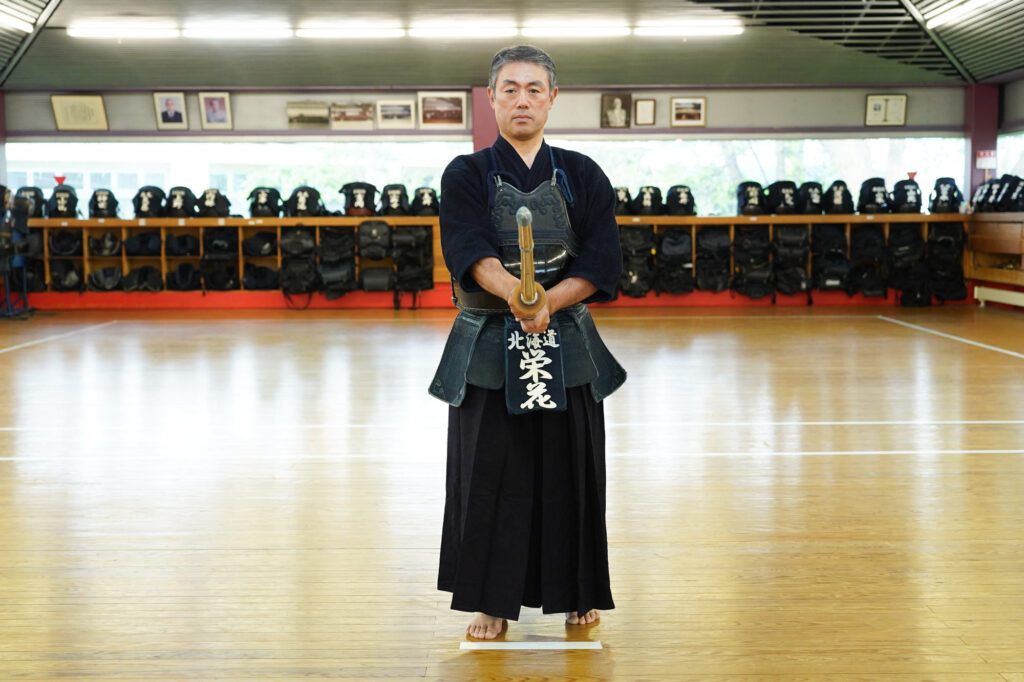
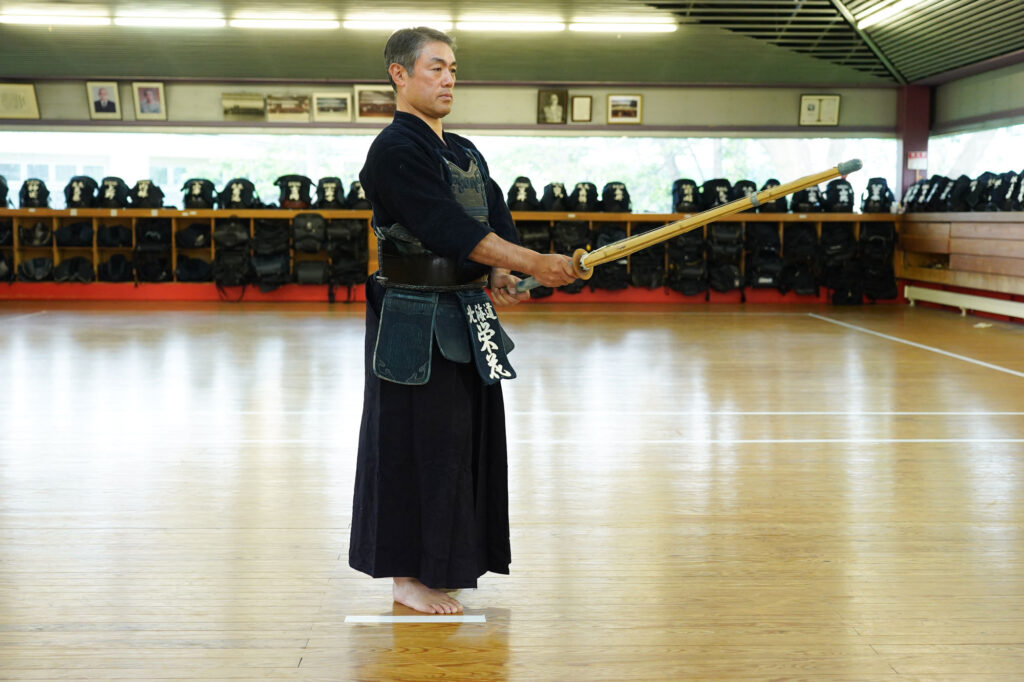
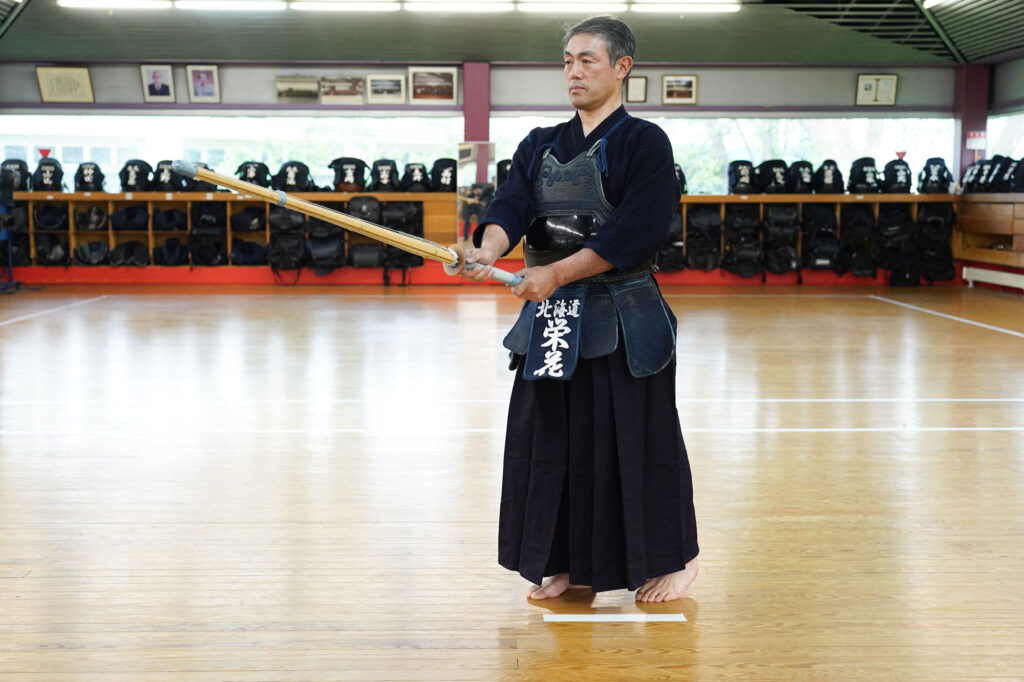
Develop body movement and Shinai handling through Suburi
Suburi is an essential training method for mastering Kendo techniques. Through Suburi, you can learn correct Shinai handling, Hasuji, proper Tenouchi, and the body movement necessary for valid strikes. It’s important to apply what you’ve learned in Suburi during Uchikomi Keiko, and then further connect what you’ve gained from Uchikomi Keiko to actual situations.
When practicing Suburi, it’s important to imagine an opponent and maintain a sense of tension as you firmly swing the Shinai from Chudan-no-kamae, sharply drawing your left foot up. While it’s common to set a number of repetitions—whether 10, 20, or 50—the goal is to perform each swing from the first to the last while meeting the conditions for a valid strike. Focus on solidifying your Kamae and swinging with fluidity. Be mindful not to change your grip on the Shinai during repeated Suburi. Execute this sequence with full spirit, ensuring your Kamae remains strong throughout.
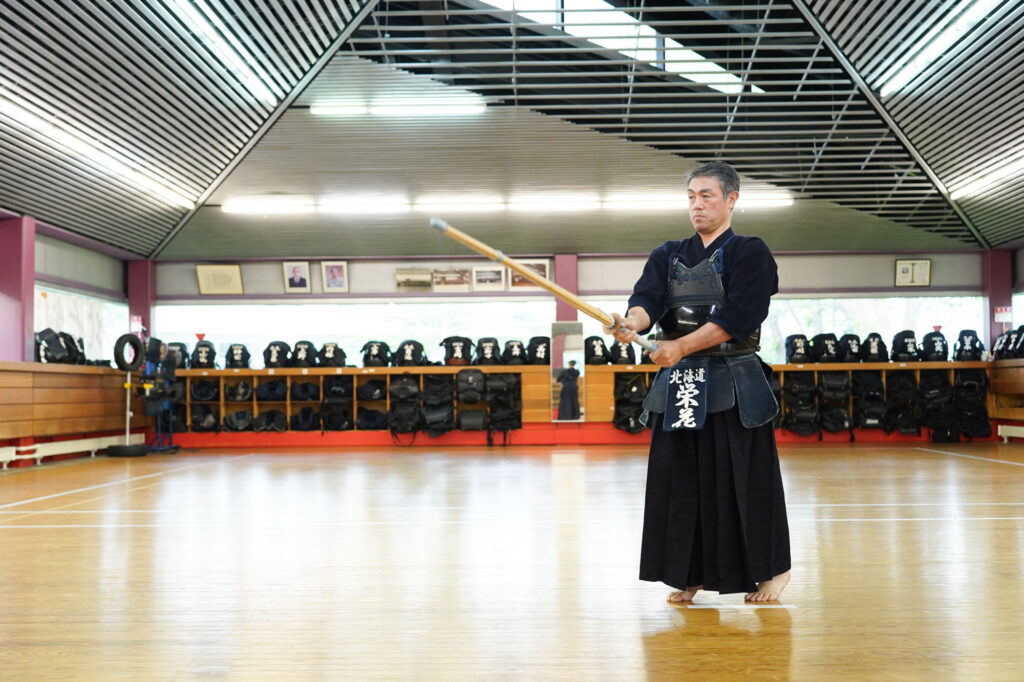
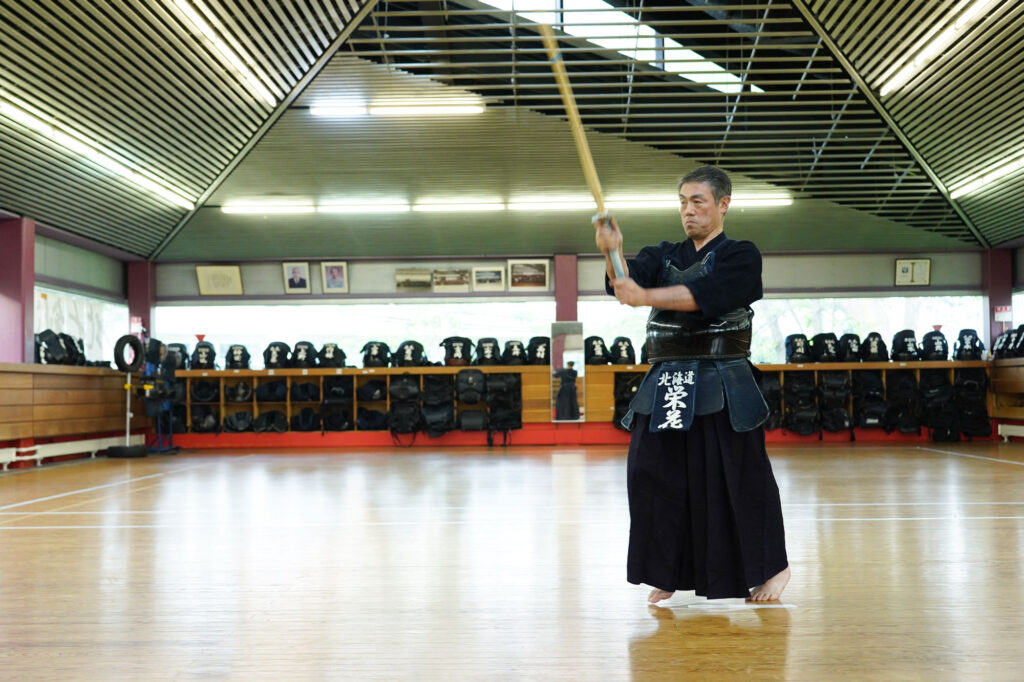
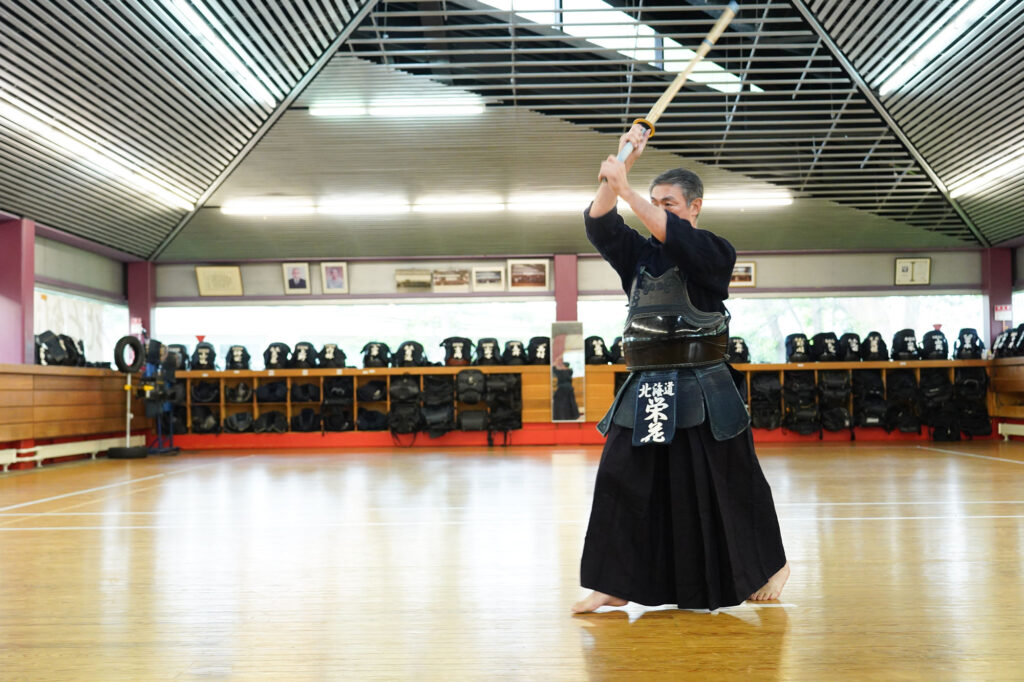
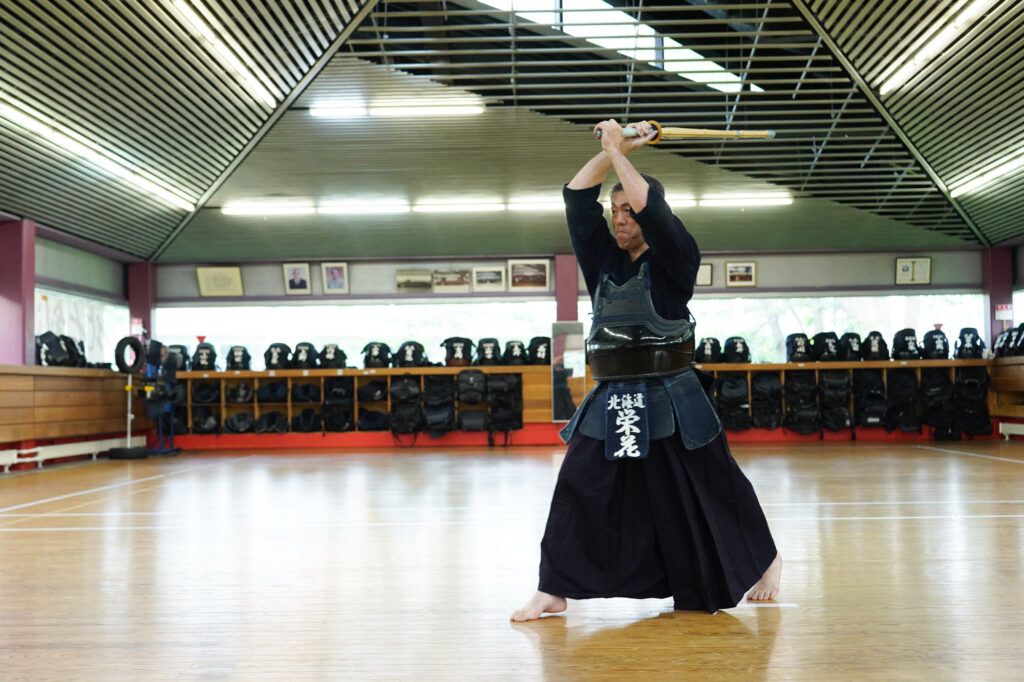
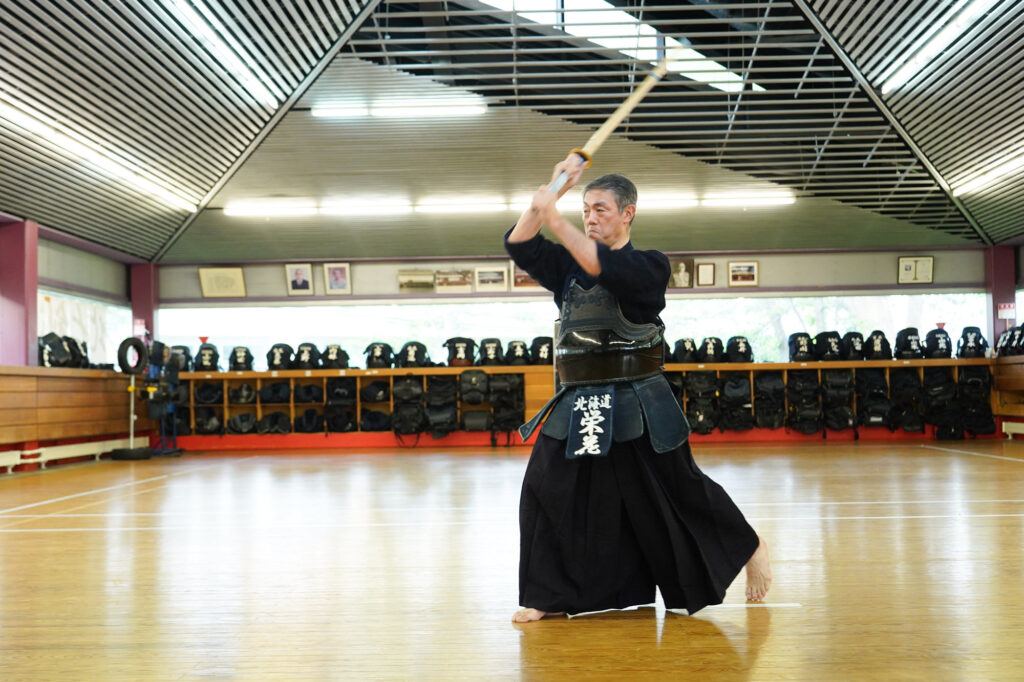
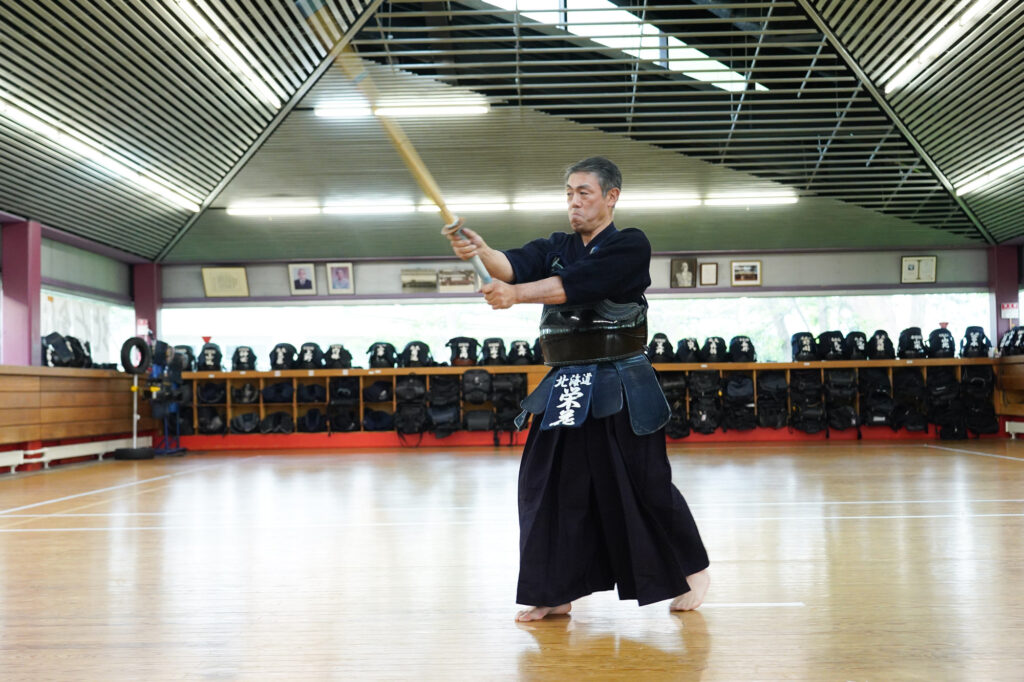
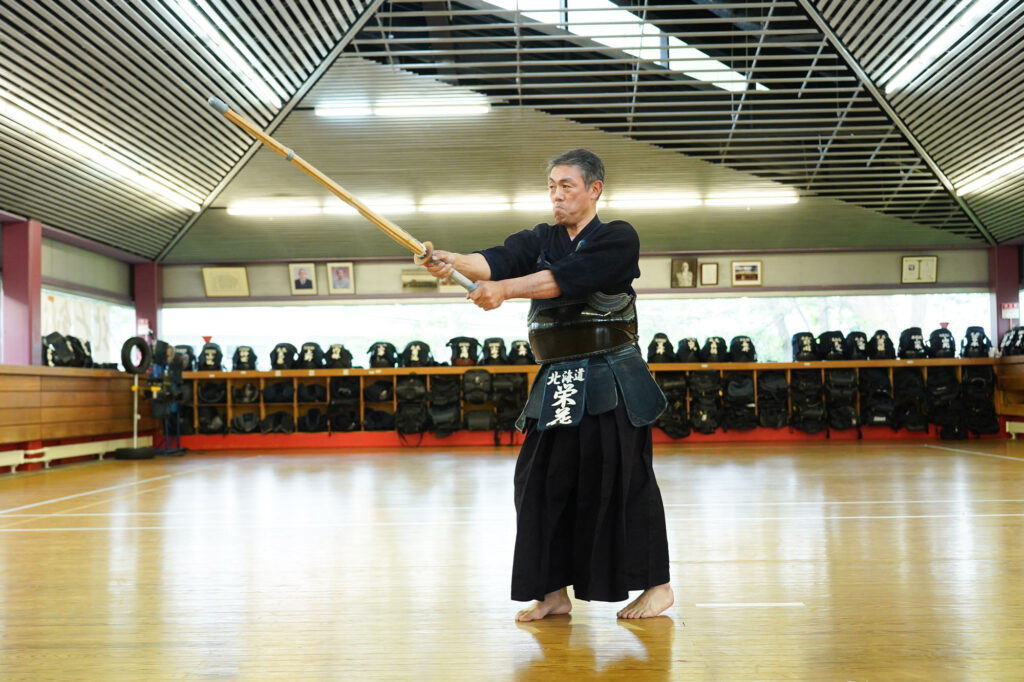
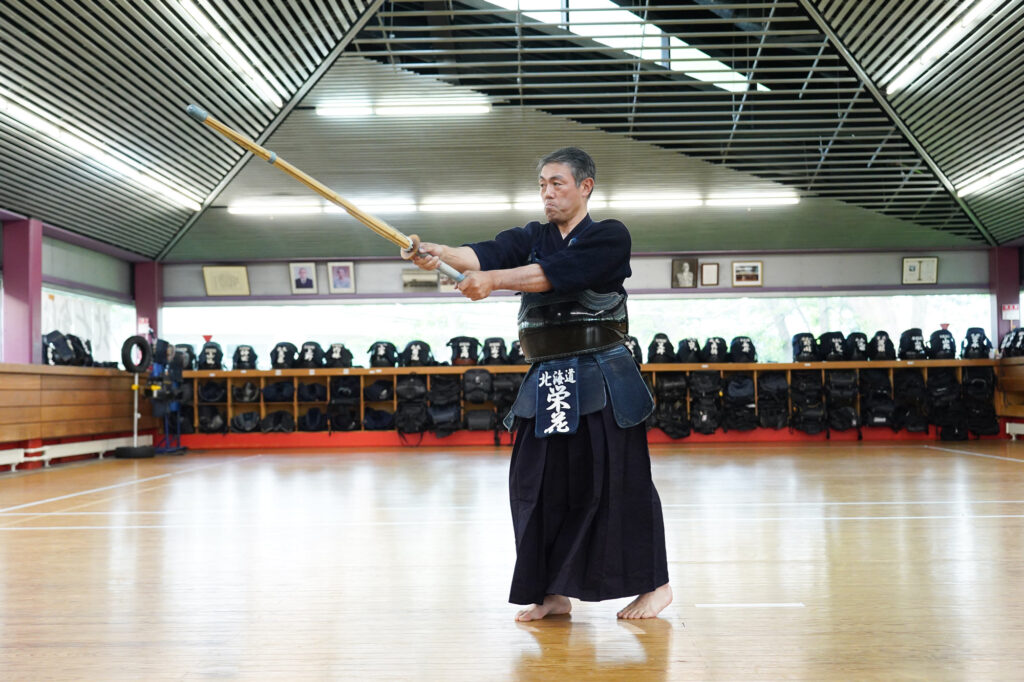
Attack with an awareness of the Three Killing Methods (San-sappo)
An important teaching for controlling your opponent is the “Three Killing Methods” (San-sappo). This involves suppressing your opponent’s spirit (Ki), sword (Ken), and technique (Waza). By controlling the movement of their sword tip, you prevent them from executing their techniques, and you overwhelm them with your spirit to seize the initiative.
When I press or hit my opponent’s Shinai to break their stance, I consciously focus on handling the Shinai with fluidity. Whether to move in and strike, or to let the opponent move in and then strike, depends greatly on the opponent’s characteristics and the opportunity presented. To adapt flexibly, it’s essential to handle the Shinai softly and respond to the situation.
When you strongly press down your opponent’s shinai, it may push their Kensen off-center, but your own Kensen will also be displaced from their center. When closing the distance, it’s important to enter softly; if you can displace their Kensen by just the width of the Shinai, that’s sufficient to take control of the center.
When closing from the Omote side, focus on the Omote Shinogi, and when closing from the Ura side, focus on the Ura Shinogi. Additionally, keep your footwork as consistent as possible—when you step forward with your right foot, make sure to bring your left foot up as well. This approach minimizes instability and ensures that your Kensen remains effective.
Keep your focus from the Seme through to the strike and Zanshin
Applying Seme to the Omote and then moving to Ura, pressuring Ura and then moving to Omote pressuring high and then low, or low and then high—variations in speed, strength, and direction are crucial in Kendo. It’s important to observe your opponent and quickly determine which technique will be effective against them.
During Keiko, it’s essential to minimize half-hearted techniques. When practicing techniques, for example, a Men strike, I make sure to enter the correct striking distance, execute the strike, and then turn around and assume Kamae again without breaking my focus. While this may seem simple, it’s something that can easily be overlooked.
To perform a valid strike that meets the criteria for valid strike, it’s essential to maintain proper posture. In actual combat, the natural feelings of “wanting to strike” and “not wanting to be struck” inevitably arise. The only way to control these feelings is through diligent Keiko and practical experience, coupled with continuous effort and study. When initiating an attack, there are times when you must close the distance until the Nakayui overlaps with your opponent’s. Entering your opponent’s Maai requires courage and can easily lead to tension. It becomes a critical moment of whether you strike or get struck, but you cannot score a valid strike from a safe distance. Keeping this in mind, I also focus on my Keiko with this awareness.
